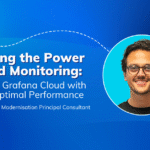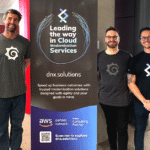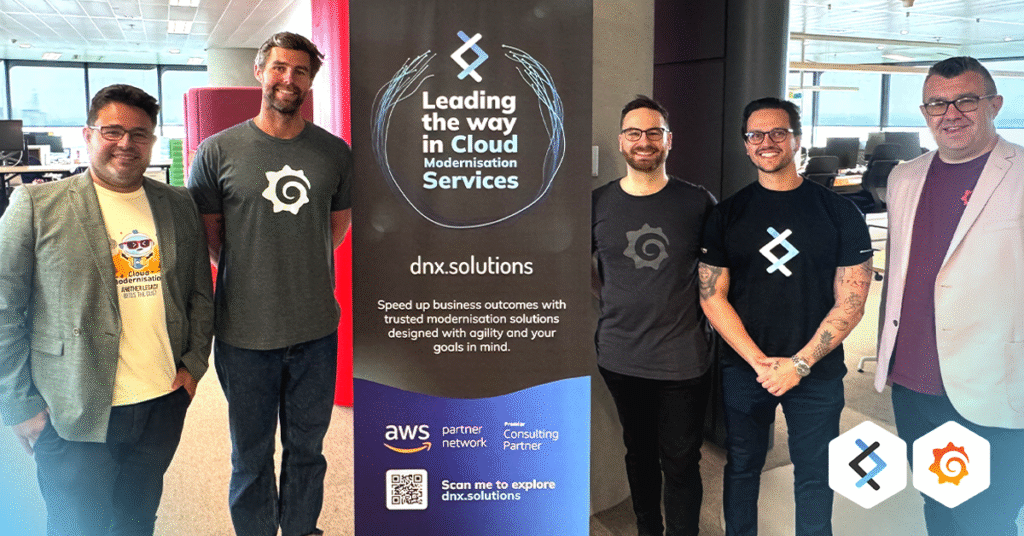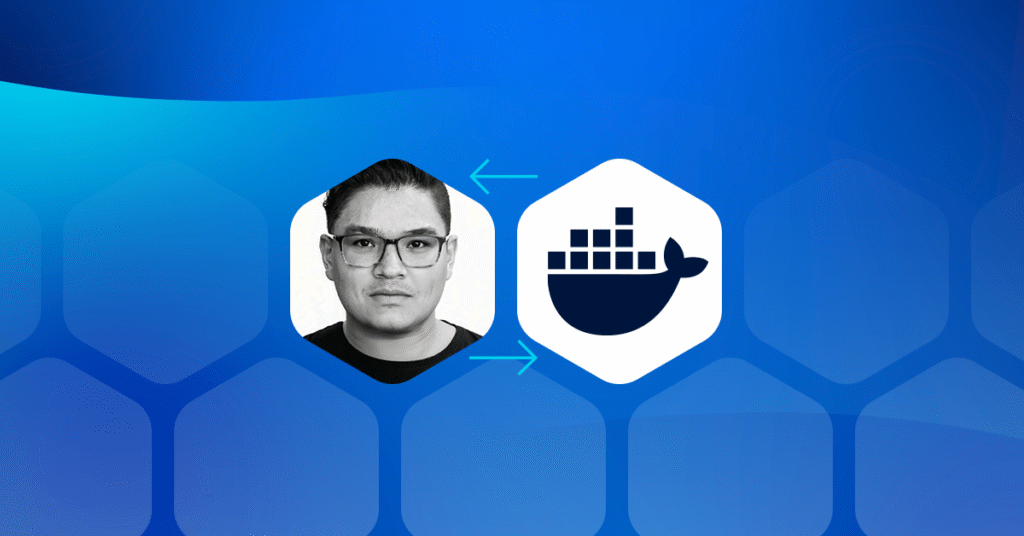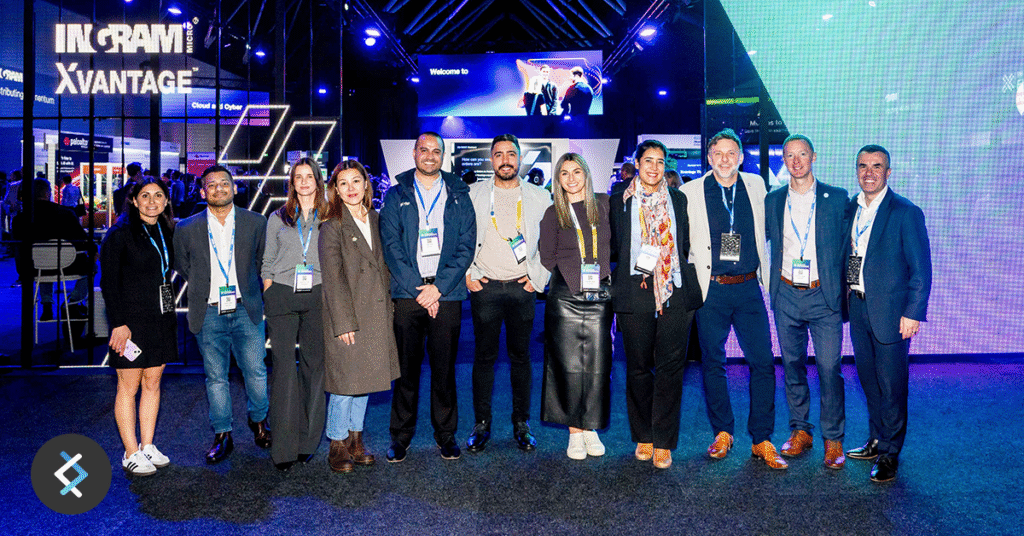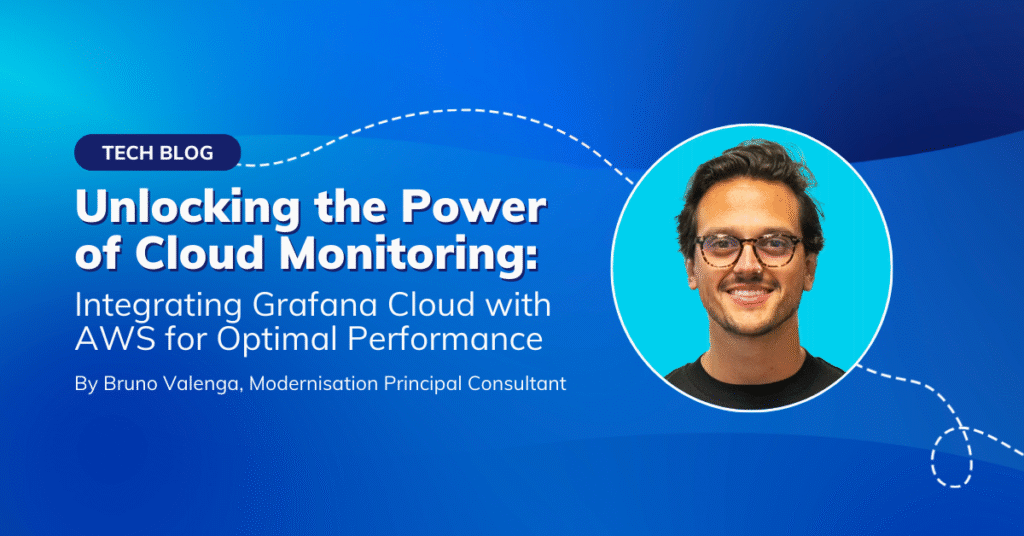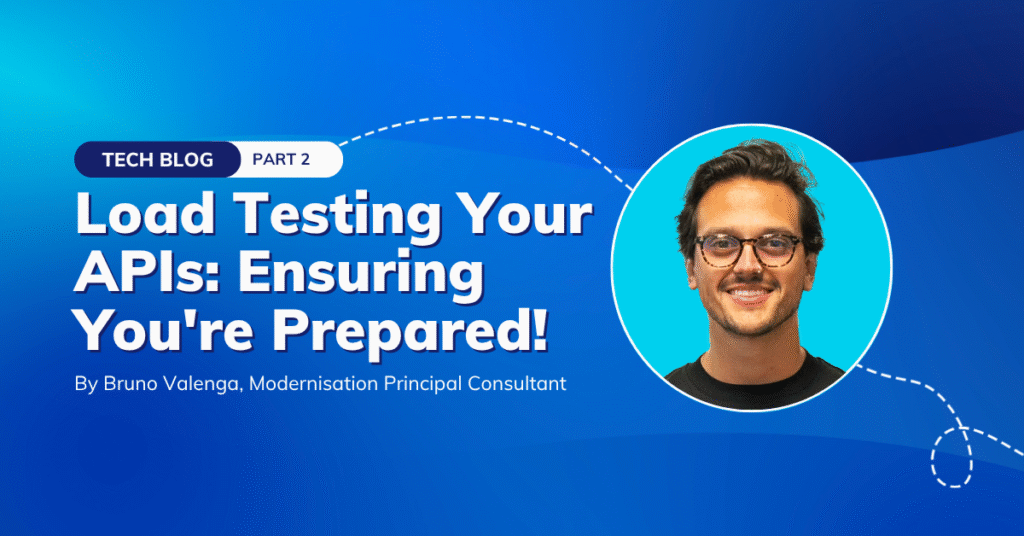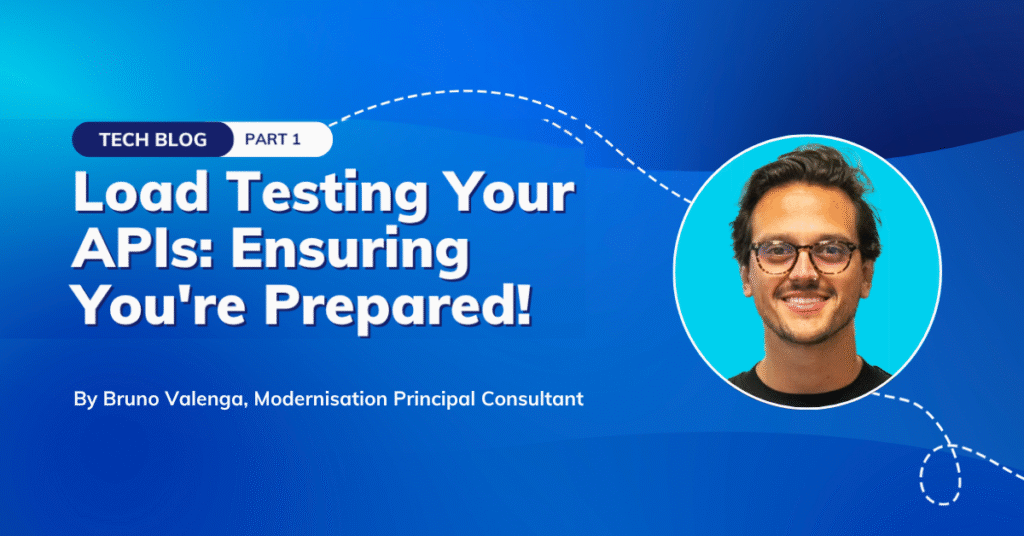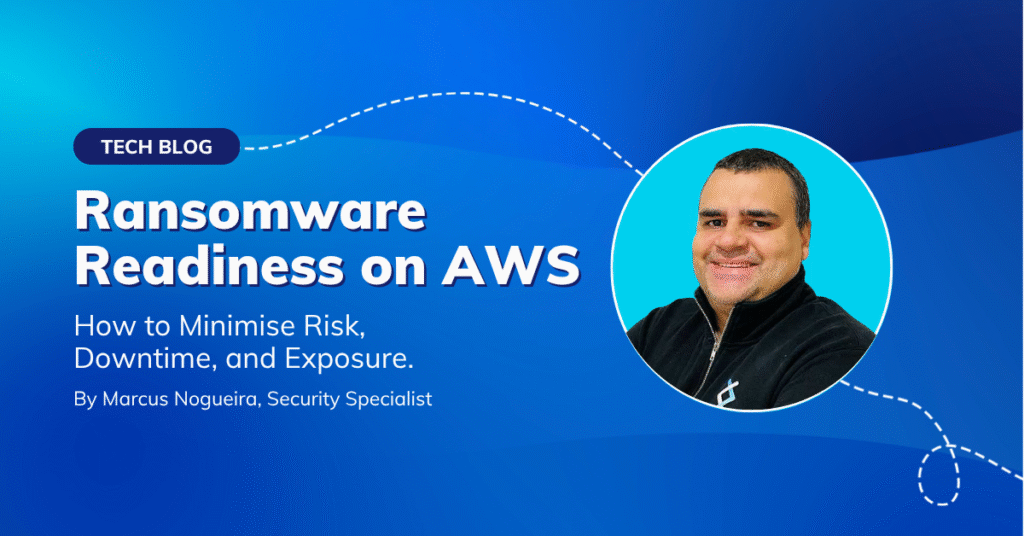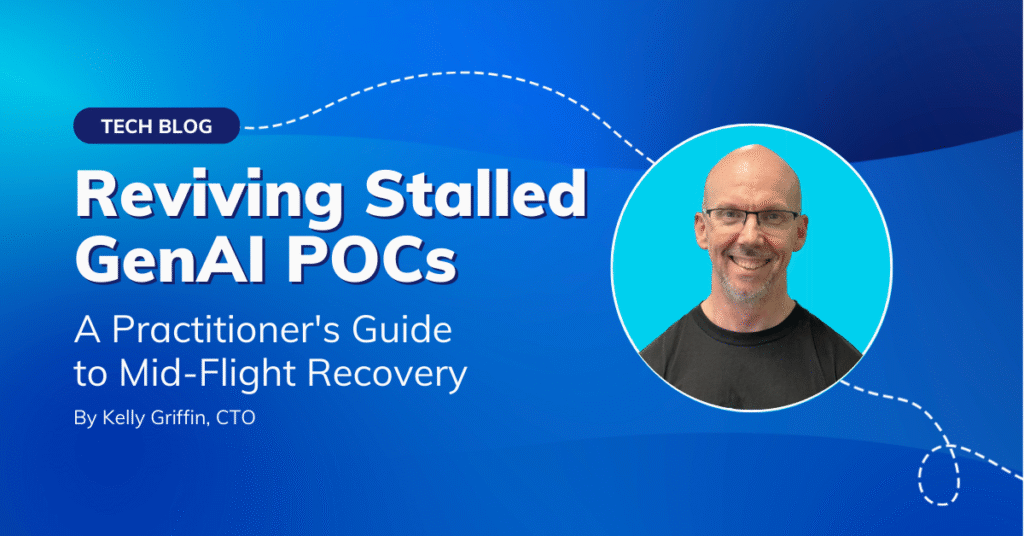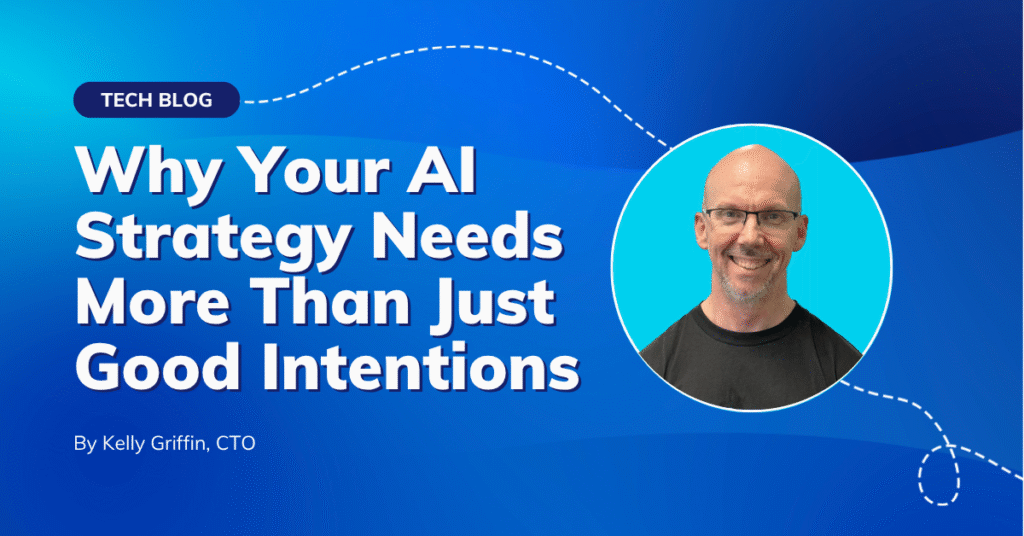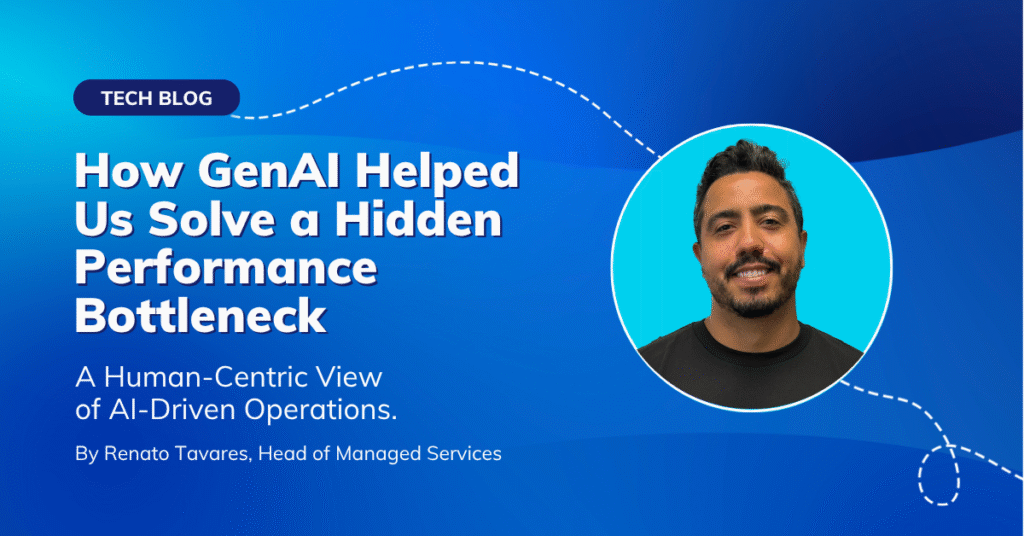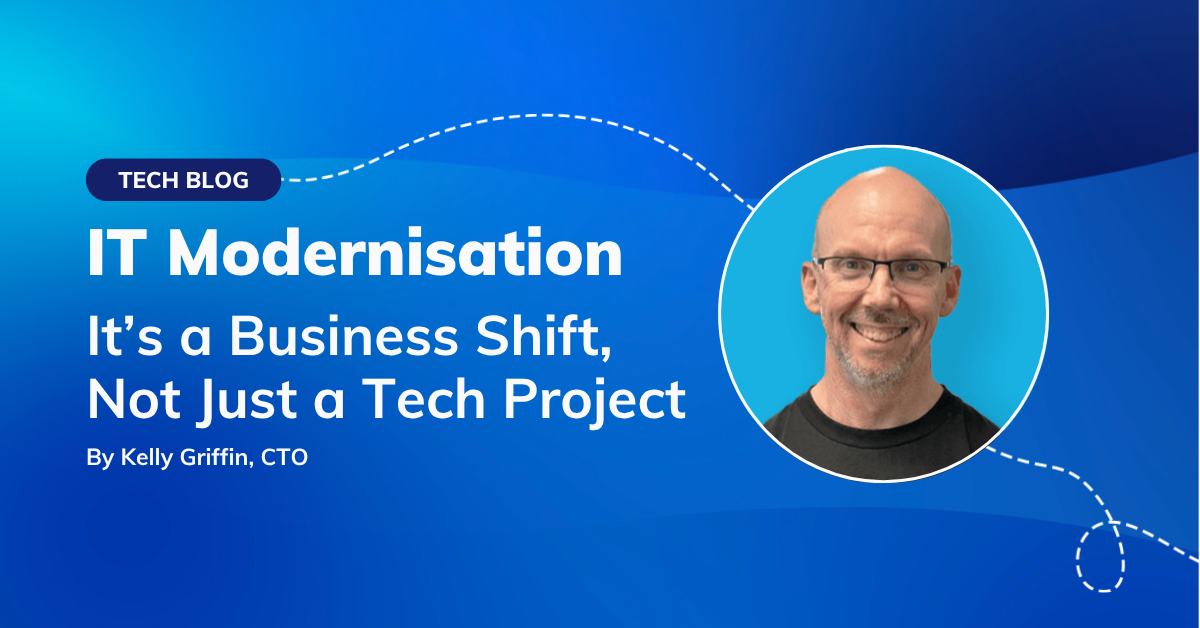
How many of you have pitched an IT modernisation project, only to see it stall, face resistance, or get shelved? It’s a frustratingly common scenario. Despite the promise of innovation, many IT modernisation efforts fail to secure the buy-in they need from C-suite stakeholders or broader organisational support.
This challenge sparked a lively discussion at a recent roundtable, leading to my favourite point: true modernisation is more than just tech—it’s a shift in your entire business operating model.
Why IT Modernisation Stalls
Here’s the thing: if you position modernisation as an IT initiative, you’ve already lost the room. It’s not because the ideas or technology weren’t sound. It’s because getting these projects to stick requires more than IT expertise; it demands organisational alignment and clear business value.
From what I’ve seen – and observed from peers —there are a few recurring reasons why modernisation efforts stall:
- The Perception Problem: Many leaders see modernisation as this complex, resource-intensive undertaking with no clear ROI. They think of it as disruptive, expensive, and long-term — a hard sell in today’s economic environment.
- Misaligned Priorities: IT and business leaders need to align on the same business goals. Without a shared vision, it’s hard to justify the cost or secure buy-in for what can feel like an “IT-only” project.
- The Complexity Trap: Let’s face it—most businesses are working with an array of legacy systems, siloed teams, and fragmented processes. Tackling this complexity can feel overwhelming, and without a clear roadmap, it’s easy to get stuck in analysis paralysis.
- Cultural Resistance: Change is hard. Modernisation often challenges the status quo, and without a strong narrative that ties it to business outcomes, resistance from teams or leadership can slow things to a crawl.
These challenges are real, but they’re not insurmountable. What’s needed is a shift in thinking—modernisation isn’t just an IT project; it’s a strategic business change. Once that’s clear, the conversation changes. Instead of asking, “Why do we need this?” stakeholders start asking, “How soon can we make it happen?”
Shifting from IT Initiative to Business Value Creation
For many organisations, IT is still seen as a cost centre—a department that “keeps the lights on” rather than a driver of strategic growth. To get the buy-in needed for modernisation projects, we have to change that narrative.
Why does this shift matter?
Short answer: Because it changes how modernisation is perceived. It’s no longer a disruptive, expensive IT project. Instead, it’s seen as a way to deliver real, measurable business value. And once stakeholders see that value, modernisation stops being a hard sell.
So, what does this shift look like in practice?
- IT as a Strategic Partner
IT needs to move out of the back office and into the boardroom. When IT initiatives are tied to business outcomes, they stop being “nice-to-haves” and start becoming essential. For example, migrating to the cloud isn’t just about flexibility—it’s about enabling faster product launches and better customer engagement. - Measurable Impact
One of the best ways to shift the conversation is by tying IT costs and investments to business units. When stakeholders can see exactly how their budgets contribute to outcomes—whether it’s reducing downtime, improving customer retention, or increasing speed to market—it builds trust and accountability. - Breaking Down Silos
This is a big one. Modernisation works best when IT and business teams collaborate. The result? Faster problem-solving, clearer priorities, and stronger alignment with strategic goals, demonstrating where and how modernisation initiatives effect direct revenue or profitability.
The Four Pillars of Modernisation Success
Now that we’ve established modernisation as a business strategy and not just an IT project, let’s talk about how to make it successful. There are four key pillars that ensure modernisation creates real business value.
1. People and Culture
Modernisation starts with your people. Giving teams the tools, training, and support they need helps them embrace change and see how it makes their work better. When innovation and collaboration are part of the culture, modernisation has a solid foundation.
2. Redesigning Processes
You can’t just automate what’s already broken. Modernisation means stepping back, rethinking processes, and finding ways to make them faster, simpler, and more effective. Whether it’s adopting agile practices or cutting out inefficiencies, better workflows lead to better outcomes.
3. Data-Driven Decisions
Data is only valuable if you can use it effectively. Including strong data governance and real-time analytics as part of modernisation efforts enable leaders to spot trends, make quick decisions, and stay ahead.
4. Financial Transparency and Accountability
When stakeholders can see how IT investments drive results—like cutting costs or boosting revenue—it builds trust. Frameworks like FinOps tie spending to outcomes, making it easier to track progress, show value, and keep everyone aligned and accountable.
Conclusion: IT Modernisation Resistance is Inevitable – But Manageable
Resistance is inevitable in any modernisation effort. It could be leadership questioning the ROI, teams hesitant to change how they work, or stakeholders worried about the disruption. When it comes to something like modernising VMware to the cloud, migrating legacy systems, or even consolidating multi-cloud environments, these concerns are common—and they’re manageable.
Here’s what I’ve seen work:
- Start Small and Build Momentum: Begin with non-critical workloads. This lowers the risk and delivers early wins, like reducing infrastructure costs or freeing up resources. Those quick results can build the confidence to tackle more complex migrations.
- Talk Business, Not Tech: For the C-suite, focus on outcomes. Instead of detailing how VMware integrates with the cloud, explain what it means for the business—faster application delivery, improved scalability, risk reduction, or savings on operational costs.
- Involve Everyone: Modernisation impacts more than just IT. Create cross-functional teams with clear roles and communication to align goals across departments. Collaboration reduces friction and helps everyone see the bigger picture.
Resistance doesn’t have to derail progress. With a clear plan, early wins, and business-focused communication, you can turn sceptics into advocates and keep the project on track.
Let’s Talk Modernisation
If you’re tackling challenges like these—or just thinking about where to start—I’d love to chat. At DNX, we’ve helped businesses simplify their modernisation journeys and deliver real results, whether it’s migrating to the cloud or transforming entire operating models. Let’s explore what’s next for you.







